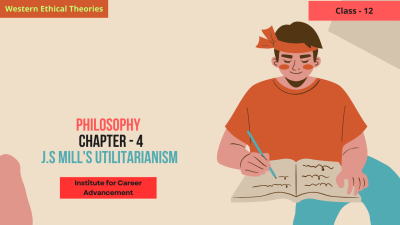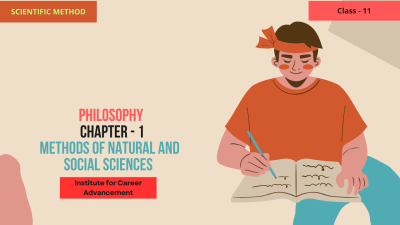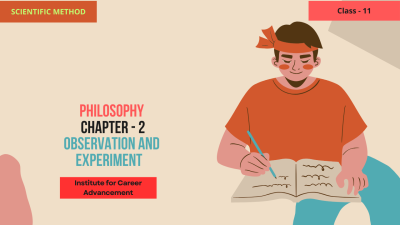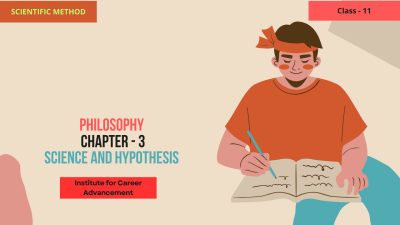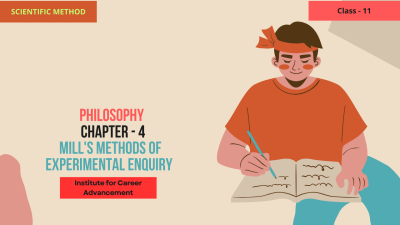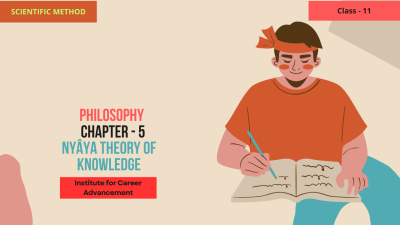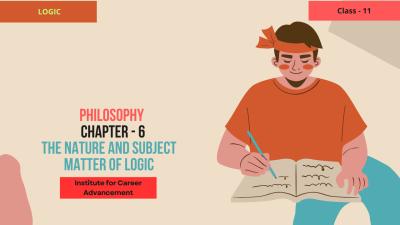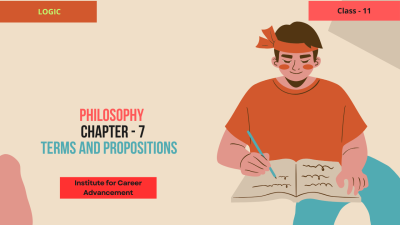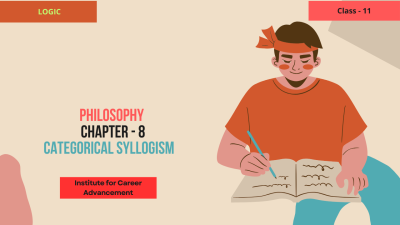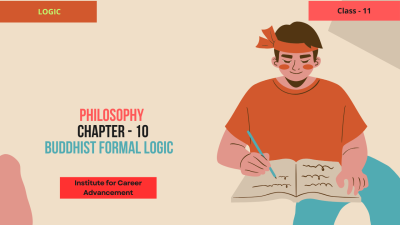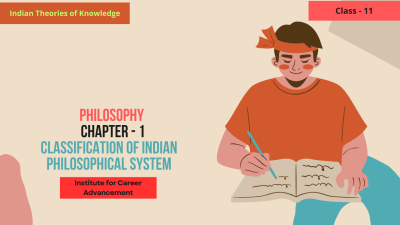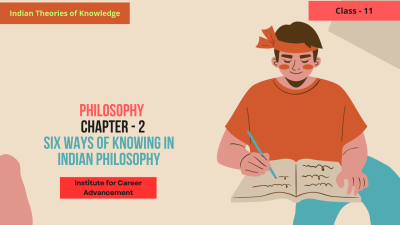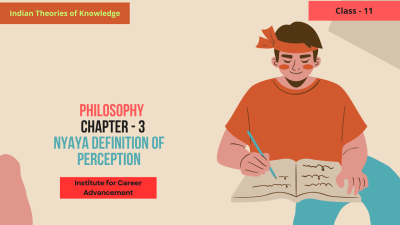Course description
Introduction to Utilitarianism:
Utilitarianism is an ethical theory that promotes actions that maximize happiness or well-being. The central idea is that the best action is the one that produces the greatest good for the greatest number. John Stuart Mill, one of the most significant philosophers in the 19th century, refined this theory, providing a comprehensive framework for moral decision-making.
Course Structure and Key Concepts:
Introduction to Ethics and Utilitarianism
What is Ethics?
Overview of Utilitarianism as an ethical theory.
Differentiating between Act and Rule Utilitarianism.
Mill's Contribution to Utilitarianism
Mill’s Hedonism: Mill's belief that happiness is the ultimate good, defined in terms of pleasure and absence of pain.
The Greatest Happiness Principle: Understanding the principle that actions are right in proportion to their tendency to promote happiness, wrong in proportion to their tendency to produce the opposite of happiness (pain).
Mill’s version of Quantitative vs. Qualitative pleasures. He distinguishes higher (intellectual and moral) pleasures from lower (physical) pleasures, arguing that the former are more valuable.
The Greatest Happiness Principle:
A closer look at how Mill's philosophy translates the idea of utility (usefulness) into moral decision-making.
Evaluating actions based on their consequences for overall happiness.
How Utilitarianism measures social and personal happiness.
Mill's Defense of Utilitarianism:
Arguments in favor of utilitarianism, including its simplicity, its universal applicability, and its emphasis on promoting the common good.
The role of social reforms and justice in Mill’s Utilitarian framework.
Mill’s critique of egoism and the self-interest perspective in ethics.
Criticism of Mill’s Utilitarianism:
Impossibility of Calculating Pleasure: Some argue it is difficult to measure happiness and compare the pleasures and pains of different people.
Minority Rights: The potential conflict between the majority’s happiness and the rights of the minority.
Overemphasis on Happiness: Critics argue that happiness may not be the only intrinsic good, and that other values like justice, rights, and duties should be considered.
Practicality: How well does utilitarianism work in real-world moral decisions?
Applications and Case Studies:
Examples of real-world ethical dilemmas where utilitarian reasoning might be applied (e.g., public policy, resource allocation, euthanasia, environmental decisions).
Exploring practical challenges in applying utilitarianism, such as complex social situations or international conflicts.
Learning Outcomes:
By the end of the course, students should be able to:
Define and explain Mill’s version of Utilitarianism.
Analyze Mill’s approach to happiness and its ethical implications.
Discuss the advantages and disadvantages of Utilitarianism in moral decision-making.
Apply Mill’s theory to various ethical situations, evaluating the consequences and how they might affect happiness.
Critically evaluate the strengths and weaknesses of the theory, particularly in comparison to other ethical frameworks.
উপযোগবাদের পরিচিতিঃ
উপযোগবাদ একটি নৈতিক তত্ত্ব যা সুখ বা মঙ্গলকে সর্বাধিক করে এমন ক্রিয়াকলাপকে প্রচার করে। কেন্দ্রীয় ধারণাটি হ 'ল সর্বোত্তম ক্রিয়াটি হ' ল সর্বাধিক সংখ্যার জন্য সর্বাধিক ভাল উত্পাদন করে। জন স্টুয়ার্ট মিল, ঊনবিংশ শতাব্দীর অন্যতম উল্লেখযোগ্য দার্শনিক, নৈতিক সিদ্ধান্ত গ্রহণের জন্য একটি বিস্তৃত কাঠামো সরবরাহ করে এই তত্ত্বকে পরিমার্জন করেছিলেন।
কোর্সের কাঠামো এবং মূল ধারণাগুলিঃ
নৈতিকতা ও উপযোগবাদের পরিচিতি
নৈতিকতা কী?
একটি নৈতিক তত্ত্ব হিসাবে উপযোগবাদের সংক্ষিপ্ত বিবরণ।
আইন ও শাসন প্রয়োগবাদের মধ্যে পার্থক্য করা।
উপযোগবাদের প্রতি মিল-এর অবদান
মিল 'স হেডোনিজমঃ মিল' স বিশ্বাস যে সুখ হল চূড়ান্ত ভাল, যা আনন্দ এবং ব্যথার অনুপস্থিতির পরিপ্রেক্ষিতে সংজ্ঞায়িত করা হয়।
সর্বাধিক সুখের নীতিঃ এই নীতিটি বোঝা যে কর্মগুলি সুখের প্রচারের প্রবণতার অনুপাতে সঠিক, সুখের বিপরীত উত্পাদন করার প্রবণতার অনুপাতে ভুল (ব্যথা)
মিল-এর পরিমাণগত বনাম গুণগত আনন্দের সংস্করণ। তিনি উচ্চতর (বুদ্ধিবৃত্তিক এবং নৈতিক) আনন্দকে নিম্ন (শারীরিক) আনন্দ থেকে আলাদা করেন, যুক্তি দেন যে প্রথমটি বেশি মূল্যবান।
সবচেয়ে বড় সুখের নীতিঃ
মিল-এর দর্শন কীভাবে উপযোগিতার (উপযোগিতা) ধারণাকে নৈতিক সিদ্ধান্ত গ্রহণে রূপান্তরিত করে তা ঘনিষ্ঠভাবে দেখুন।
সামগ্রিক সুখের জন্য তাদের পরিণতির উপর ভিত্তি করে কর্মগুলি মূল্যায়ন করা।
উপযোগবাদ কিভাবে সামাজিক এবং ব্যক্তিগত সুখ পরিমাপ করে।
মিল 'স ডিফেন্স অফ ইউটিলিটেরিয়ানিজমঃ
উপযোগবাদের পক্ষে যুক্তি, এর সরলতা, এর সর্বজনীন প্রয়োগযোগ্যতা এবং সাধারণ ভালোর প্রচারের উপর জোর দেওয়া সহ।
মিলের উপযোগবাদী কাঠামোতে সামাজিক সংস্কার এবং ন্যায়বিচারের ভূমিকা।
মিল-এর অহংবোধের সমালোচনা এবং নৈতিকতার ক্ষেত্রে স্বার্থের দৃষ্টিভঙ্গি।
মিল-এর উপযোগবাদের সমালোচনাঃ
আনন্দ গণনা করার অসম্ভবতাঃ কেউ কেউ যুক্তি দেন যে সুখ পরিমাপ করা এবং বিভিন্ন মানুষের আনন্দ ও ব্যথার তুলনা করা কঠিন।
সংখ্যালঘু অধিকারঃ সংখ্যাগরিষ্ঠের সুখ এবং সংখ্যালঘুদের অধিকারের মধ্যে সম্ভাব্য দ্বন্দ্ব।
সুখের উপর অতিরিক্ত জোরঃ সমালোচকরা যুক্তি দেন যে সুখ একমাত্র অন্তর্নিহিত ভাল নাও হতে পারে এবং ন্যায়বিচার, অধিকার এবং কর্তব্যের মতো অন্যান্য মূল্যবোধগুলি বিবেচনা করা উচিত।
বাস্তবতাঃ বাস্তব-জগতের নৈতিক সিদ্ধান্তের ক্ষেত্রে উপযোগিতাবাদ কতটা ভাল কাজ করে?
প্রয়োগ এবং কেস স্টাডিঃ
বাস্তব-বিশ্বের নৈতিক দ্বিধাদ্বন্দ্বের উদাহরণ যেখানে উপযোগবাদী যুক্তি প্রয়োগ করা যেতে পারে (e.g., পাবলিক পলিসি, সম্পদ বরাদ্দ, ইচ্ছামৃত্যু, পরিবেশগত সিদ্ধান্ত)
জটিল সামাজিক পরিস্থিতি বা আন্তর্জাতিক দ্বন্দ্বের মতো উপযোগবাদ প্রয়োগের ক্ষেত্রে ব্যবহারিক চ্যালেঞ্জগুলি অন্বেষণ করা।
শেখার ফলাফলঃ
কোর্সের শেষে, শিক্ষার্থীদের সক্ষম হওয়া উচিতঃ
মিল-এর উপযোগবাদের সংস্করণটি সংজ্ঞায়িত করুন এবং ব্যাখ্যা করুন।
সুখের প্রতি মিলের দৃষ্টিভঙ্গি এবং এর নৈতিক প্রভাবগুলি বিশ্লেষণ করুন।
নৈতিক সিদ্ধান্ত গ্রহণে উপযোগবাদের সুবিধা ও অসুবিধাগুলি আলোচনা করুন।
মিল-এর তত্ত্বটি বিভিন্ন নৈতিক পরিস্থিতিতে প্রয়োগ করুন, ফলাফলের মূল্যায়ন করুন এবং কীভাবে তারা সুখকে প্রভাবিত করতে পারে।
তত্ত্বের শক্তি ও দুর্বলতাগুলি সমালোচনামূলকভাবে মূল্যায়ন করুন, বিশেষ করে অন্যান্য নৈতিক কাঠামোর তুলনায়।

